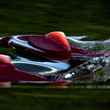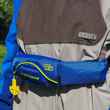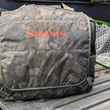Standing amongst a crowd of dealers, media and brand folks at last year's IFTD show in Orlando, we all watched in collective disbelief as Tim Rajeff tossed line strung on an ECHO 3 weight glass rod clear across the casting pond. Mixed in with the myriad comments of praise and wonder, the quip of one onlooker stood out. "Good lord, Tim is an unbelievable caster." While eavesdropping, I nodded to myself, unable to do anything but concur. But the onlooker continued, "I only wish he'd build rods he'd actually fish." The onlooker and his companion both let out a hearty chuckle and patted each other's backs in agreement, and sauntered off, leaving me shaking my head in confusion.
Well, not all that much confusion. The onlooker's comment was one meant to be at ECHO and Tim's expense, presumably for not making rods that are expensive enough. It's a common slight directed at manufacturers that intentionally target the entry and mid-level price ranges. And it's usually a crock of shit. Those of us that have actually fished ECHO fly rods — and done so for years — know that Tim's rods are more than fishable, even for expert casters like Rajeff himself. Over the years, Tim and ECHO have turned out a number of excellent rods that perform as well as rods that cost twice as much.
That last bit is no accident. Rajeff founded ECHO on the premise that good fly rods don't have to cost a lot of money. But despite the high performance rods that ECHO keeps turning out, the well-heeled mantra that "price tags don't make good fly rods", and the growing strength of the mid-priced rod segment, evidently some still remain unconvinced. That's not to say that every rod ECHO turns out is perfect or memorable. But the same could likely be said of most rod manufacturers. More often than not, however, ECHO brings rods to the market that are true performers.
I've been fishing the ECHO 3S for a few years, in a 7 weight, and liked the rod well enough and recommended it to others. More recently, I laid my hands on and have been fishing the 3S in an 8 weight and 10 weight and have been truly impressed. As it turns out, ECHO recently tweaked the action of the 3S, softening the tip up by about 10%, and the improvement is noticeable.
What Works
Action
The ECHO 3S is fast, but not unnecessarily so. Like most rods that do what you need them to do on the flats or other saltwater environments, the ECHO 3S excels at picking up line, generating line speed, delivering tight loops and long casts with minimal backcasts and punching line into the wind with confidence-producing power. But the ECHO 3S isn't just about power and speed. Properly lined (personally, I like an over-weighted line like the Airflo Chard's Tropical Punch or the Scientific Anglers Wavelength Grand Slam), the ECHO 3S has enough flex in the tip and feel to tackle both long presentations and short without frustration.
Accuracy
For many casters, one of the tradeoffs of a faster action is accuracy. With less time to feel the rod load and make adjustments, it is often harder to hit the intended target. The 3S offers a nice compromise of speed and feel, a trend that is becoming increasingly common in saltwater rod design after years of producing rods seemingly focused solely on being fast, and recovers with torsional stability that is reminiscent of some of the highest end rods on the market today.
Craftsmanship
When you're fishing a mid-range rod, you're always expecting to find the compromises somewhere. You won't find ceramic Fuji stripping inserts (although the 2016 tweaks do include titanium stripping guides), recoil guides or super-grade cork here, but with that said the craftsmanship of the ECHO 3 series is quite fine. It's a pretty rod, the blank finish and rod wraps are surprisingly good and ECHO's "high density cork" leaves little, if anything, to be desired.
What Doesn't
The most important aspect of a fly rod is its performance, unless you're purchasing it as a shelf piece instead of a fishing tool. In this regard, the ECHO 3S excels. If you're looking to find something to gripe about, you'll have to look into the aforementioned lack of component expense.
Final Word
It's one thing to speak well of a rod or even recommend it to others, it's an entirely different thing to actually reach for that rod when it's time for to you take a shot at a fish. This is particularly the case on the flats, where every shot demands a tool that you can count on. After all, unless you're an expert like Rajeff, you likely know that in high-pressure situations like those that commonly arise on the flats, there's a pretty good chance that you'll find at least a few ways to screw up the chances that do come along. The last thing you need is your fly rod compounding the problem.
Even on a recent trip to the Yucatan, where blowing winds, cloudy skies and cold water temperatures conspired to produce a minimum of quality shots — the ECHO 3S remained one of a few go-to rods for the duration of the trip. Whether the first good shot at tailing bonefish in a few hours, or the first shot of any kind at a permit in 3 days, the ECHO 3S was repeatedly reached for with confidence.
And that's the reality of the 3S. It's incredibly capable, responsive and packs plenty of power. There are no situations when I'd feel under-equipped toting the 3S. None. Are there other saltwater rods out there that I'd reach for first? Sometimes. Not always. Is there another rod that offers the same performance at such a value? Not that I've cast.
Once again, Tim Rajeff and ECHO have produced a rod that performs as well or better than rods that are double or nearly double its price.






























Comments
Royce replied on Permalink
This review was helpful by discussing the workmanship of an Echo rod.
Pages